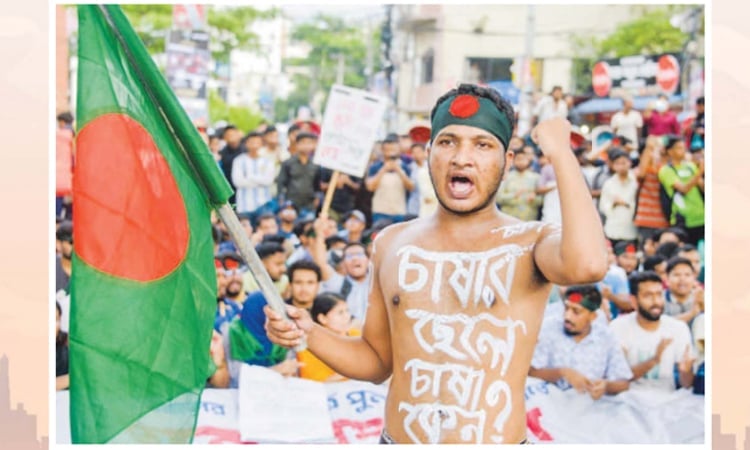As the government was trying to ignore the students’ movement demanding reinstatement of the 2018 government circular that cancelled quota system in government jobs, saying it was a matter of court, the protesters announced new programme identifying as ‘Bangla Blockade’ on July 6 to realize their demand.
“Our programmes until July 6 were protest processions only. The ‘Bangla Blockade’ was observed on July 7 as the court was prolonging process,” Asif Mahmud Shojib Bhuyain, one of the key coordinators of the anti-discrimination student platform, wrote in his book titled ‘July: Matribhumi Othoba Mrityu’.
The hearing on the High Court order slated for July 4 was postponed and the movement and the students’ opinions were being ignored and looked down upon, said Asif, now an advisor of the interim government.
Students felt their opinions were being disregarded. While they were staging demonstrations blocking the Shahbagh intersection, many vehicles were simply bypassing them, which dampened the intended impact of the protest.
“(As by that time) students from other educational institutions in Dhaka had already joined the movement . . . the ‘Bangla Blockade’ programme was announced with the idea of holding a movement on a larger scale,” Asif recalled.
On the same day, students from different universities across the country declared a boycott of classes and examinations expressing solidarity with the movement.
Before declaring the ‘Bangla Blockade’, the protesters blocked Shahbagh intersection for about an hour. Later, around 5:30 pm, they moved away from the location, allowing traffic flow through Shahbagh.বিস্তারিত


